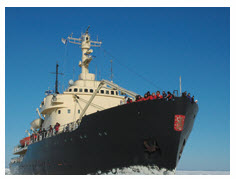
Finland and Canada share many similarities that bring us closer despite our geographic distance. Both are Northern and Arctic democracies with common values, good governance, wealthy economies, highly educated workforces, an entrepreneurial spirit and a strong belief in the rule of law. We share similar interests and work together in international forums, including the United Nations and the Arctic Council, which Canada is currently chairing and which Finland is set to chair beginning in the spring of 2017. In addition, Finns and Canadians have a similar mentality, evidenced by our common passion for ice hockey.
Despite all of this, there is room for improvement when it comes to trade between the two countries. In 2013, the trade balance between Finland and Canada was heavily favourable to Finland: Finnish exports to Canada totalled $1.1 billion, accounting for 1 percent of the country’s total exports, while Canadian exports to Finland amounted to just $350 million.
The products and goods moving between the two countries are, for the most part, similar. Finland’s primary exports to Canada are renewable fuels such as diesel, machinery and machine parts, electronics, instruments and nickel ores. Finland’s imports from Canada include petroleum and oil products, motor vehicles and motor vehicle parts, ores and minerals, as well as instruments and apparatus, especially for telecommunications. It’s worth mentioning, however, that the Finnish gaming industry’s significant exports to and operations in Canada do not appear in these statistics. For example, few Canadians know that the video game Angry Birds is a Finnish creation. Trade in services is also not reflected.
Investments between the countries are also rather lopsided. Finnish direct investments to Canada were more than $2.5 billion, with the chemicals industry, forestry, IT, bio-energy and health care taking the lion’s share. For example, a Finnish company manufactures high-tech plastic polyethylene pipes of many sizes in Ontario and Saskatoon, not only for the Canadian market, but also for export to the U.S.
Meanwhile, Canada invested just $120 million in Finland, 0.02 percent of Canada’s total foreign direct investments. Nearly all Canadian investments in Finland were made by a select few, but important mining companies such as Agnico-Eagle Mines, which operates mines in the Finnish Lapland. Canadian investors have a good reputation in Finland and further investments are encouraged.
Considering the similarities between Finland and Canada, our northern location, our highly developed economies and our shared economic interests, from forestry to high-tech, the possibilities for co-operation are endless. One of the most interesting is Arctic expertise. Finnish businesses have developed numerous solutions that can be very useful in building up Canada’s northern infrastructure.
Currently, the Arctic region is undergoing a number of rapid, conflicting developments. The effects of global warming are seen more dramatically in the North than anywhere else. New transport routes are opening up; energy resources and minerals are being developed and tourism is on the increase. The interest in developing the Arctic region on one hand, and the importance of safeguarding the region’s very delicate environment and the rights of the local population on the other, means demand for Arctic expertise is on the rise.
Finland and Finnish companies have longstanding experience in operating in Arctic conditions. Finns have outstanding knowledge of winter navigation: Finnish ice-reinforced vessels have been operating for decades in the challenging Baltic Sea and the Arctic. Finland is also the leading manufacturer of state-of-the-art Polar icebreakers. Furthermore, innovative energy solutions, clean technologies, infrastructure suitable for harsh Arctic conditions and reliable, high-capacity information networks and digital services are instrumental in boosting economic activity in the Arctic. As in all science, research, technology and innovation-related areas, there is a chance for great co-operation here.
As stated before, the huge potential in trade relations between Finland and Canada is increasingly evident. We enjoy an excellent relationship and have great respect for each other. We co-operate effectively on all government levels and in several international forums. The investment and trade standards are similar in both countries and there are few barriers to trade.
It is also worth noting that the Comprehensive Economic and Trade Agreement (CETA) between Canada and its second-largest trading partner — the European Union — is in final negotiations. CETA will practically eliminate tariffs and other barriers, thus providing a significant boost to trade between the EU and Canada, obviously including Finland as an EU member state.
Existing Finland-Canada trade relations are good and potential for the future seems bright indeed. But it won’t happen automatically. Both sides must get people involved so new business deals can be negotiated. Our governments, embassies and diplomats have an important role in developing solutions to facilitate Finnish-Canadian co-operation and business-to-business contacts. For myself, I see this as a top priority.
Charles Murto is ambassador of Finland to Canada. Reach him at Charles.Murto@formin.fi or (613) 288-2233.





